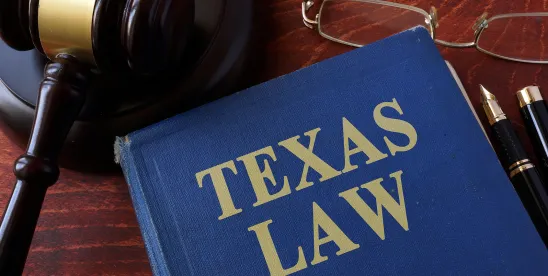In In re In the Est. of Booth, Bill and Doris were married in 1991 and had separate and joint accounts, No. 02-24-00056-CV, 2025 Tex. App. LEXIS 2666 (Tex. App.—Fort Worth April 17, 2025, no pet.). In 2009, Bill transferred funds from his separate account into Doris’s separate account. In 2010, proceeds from the sale of Bill’s home were deposited into a joint account. Doris died in 2011, and her will left her separate property to her children (the appellees) and the community property to Bill. Bill died in 2013, and his granddaughter (the appellant) became executor of his estate. She later sued Doris’s heirs, alleged that Doris’s heirs had misappropriated and failed to disburse to Bill his fair share of funds from the sale of his house, the various accounts, his annuity, and a car that the couple had owned. The parties filed competing summary judgments, and the trial court granted Doris’s heirs’ motion and denied Bill’s granddaughter’s motion.
The court of appeals discussed the existence of a fiduciary relationship, both formal and informal. Regarding a formal relationship, the court stated:
We first address the alleged duty. Apart from her argument for the existence of a formal fiduciary relationship between Bill and Appellees, Appellant furnishes no evidence in support of the formation of such a relationship. She proffers no signed writings, agreements, or oral statements between Bill and Appellees that would constitute a formal fiduciary relationship. Appellant points to Doris’s power of attorney—and the agency relationship it established—as an attempted imputation of a fiduciary relationship between Appellees and Bill. However, without more, the existence of a formal relationship between Doris and Appellees is not evidence of a supposed duty to Bill.
Id. Regarding an informal fiduciary relationship, the court held that a family relationship alone does not establish a fiduciary relationship; objective facts must show that one party was justified in relying on the other to act in their best interest:
An informal relationship may give rise to a fiduciary duty where one person trusts in and relies on another, whether the relation is a moral, social, domestic, or purely personal one. However, “not every relationship involving a high degree of trust and confidence rises to the stature of a fiduciary relationship” and such a finding is not made lightly.
A family relationship, while it is considered as a factor, does not by itself establish a fiduciary relationship. The existence of a fiduciary relationship must be shown by objective facts, but “mere subjective trust does not create a fiduciary relationship.” The evidence must show that the “dealings between the parties continued for such a time that one party is justified in relying on the other to act in his best interest.”
The parties do not dispute that Bill was competent to make financial decisions and transactions. Though a stepparent-stepchild relationship existed between Appellees and Bill, we are left without objective facts to show the existence of an informal relationship of trust and confidence. Rather, there is alleged subjective trust founded on Appellees dropping off Bill and Doris’s income taxes and paying their assisted living bills. But again, the mere fact that the parties trust one another does not, in and of itself, establish a finding of a confidential relationship. The evidence depicts limited instances of imparted reliance, and we conclude that it does not raise an issue of material fact regarding a relationship of trust and confidence that necessitates a fiduciary duty.
Id. The court noted that there was no evidence of a fiduciary relationship between Doris’s heirs and Bill.
Regarding a claim for fraud and fraud by non-disclosure, the court stated: “Appellant must establish a duty to disclose on the part of Appellees, and she may do so by showing that there was a fiduciary or other special relationship requiring disclosure; that Appellees created a false impression by making a partial disclosure; or that Appellees voluntarily disclosed some information and therefore had a duty to disclose the whole truth.” Id. The court found no evidence of false representations or a duty to disclose on the part of appellees, and thus no actionable fraud.
The court also held that fraud on the community is not an independent tort and does not survive a spouse’s death for the benefit of that spouse’s estate:
“Fraud on the community” is the wrongful disposition of community assets—it is “[t]he breach of a legal or equitable duty which violates [the] fiduciary relationship existing between spouses.” The supreme court has held that there is not an independent tort for fraud on the community. Rather, “[a] claim of fraud on the community is a means to an end, either to recover specific property wrongfully conveyed, . . . or . . . to obtain a greater share of the community estate upon divorce, in order to compensate the wronged spouse for his or her lost interest in the community estate.”
Id. The court noted that Bill’s executor lacked standing to bring this claim.
The appellant alleged theft and financial exploitation regarding transfers between marital accounts. The court held that transfers between spouses are presumed to be gifts unless clear and convincing evidence shows a lack of donative intent, which was not provided. No evidence was found of unlawful appropriation, deception, or coercion by appellees.
The court held that the trial court erred by granting summary judgment on the declaratory judgment claim, as the motion did not cover that claim. The appellate court reversed and remanded this portion for further proceedings.




 />i
/>i

